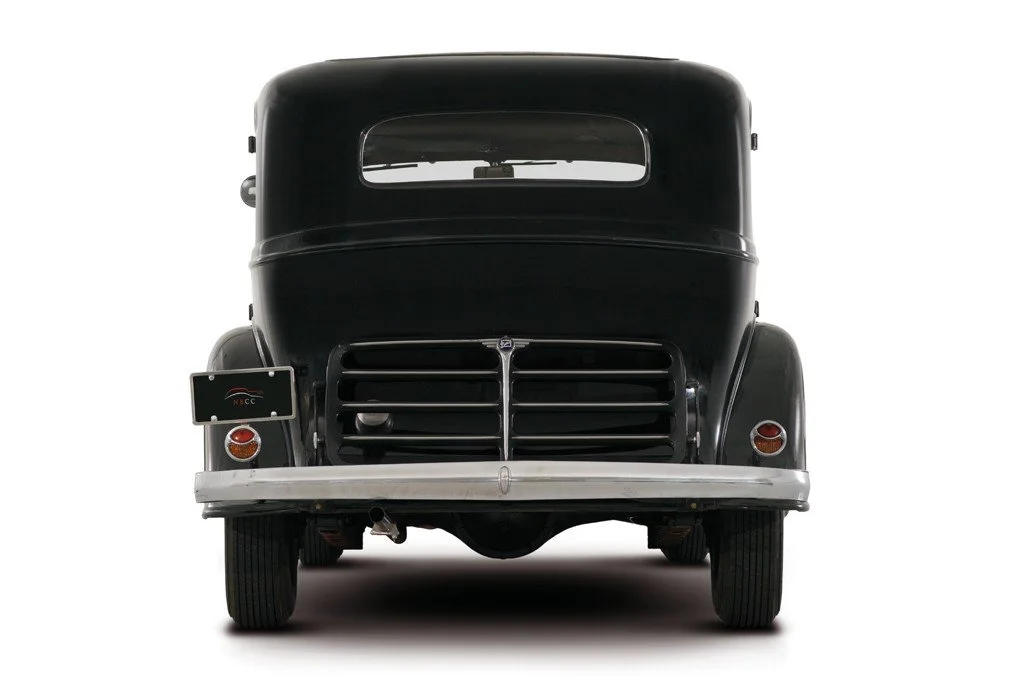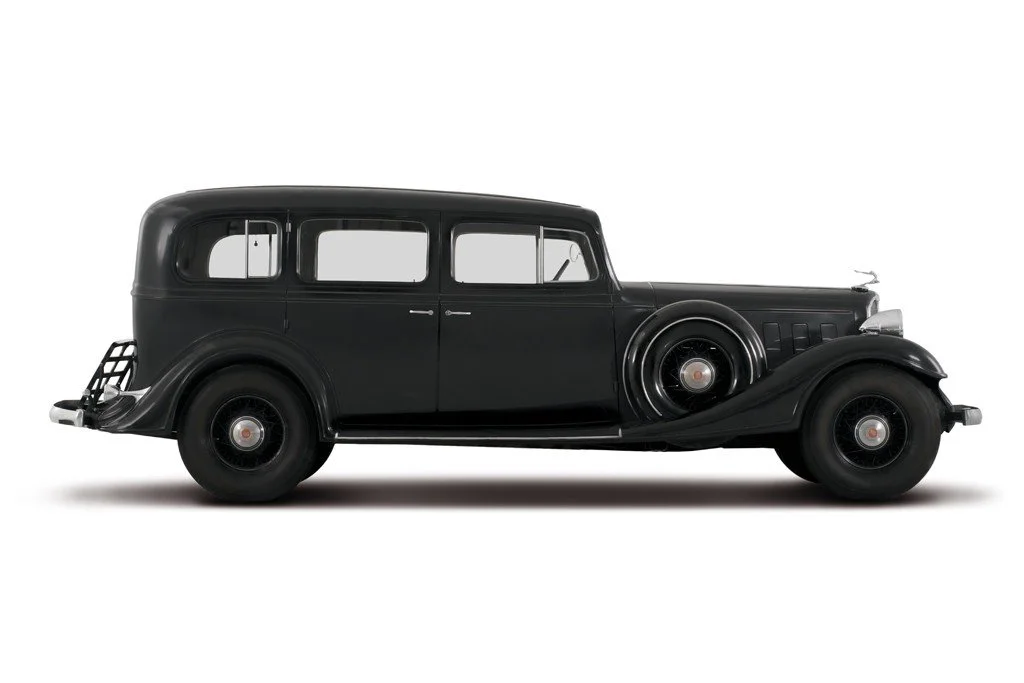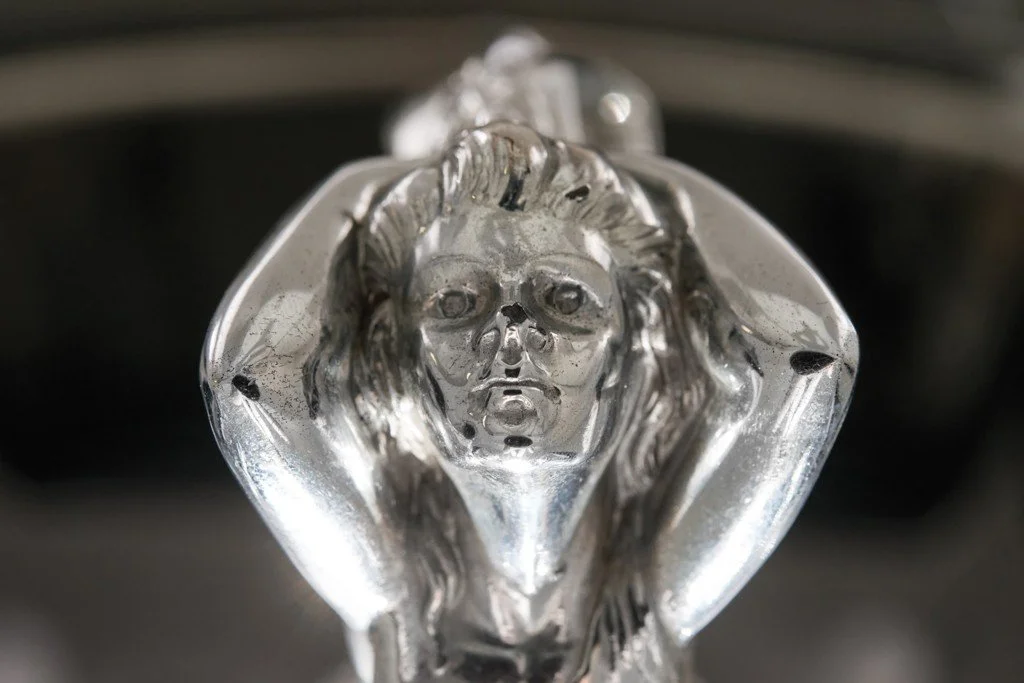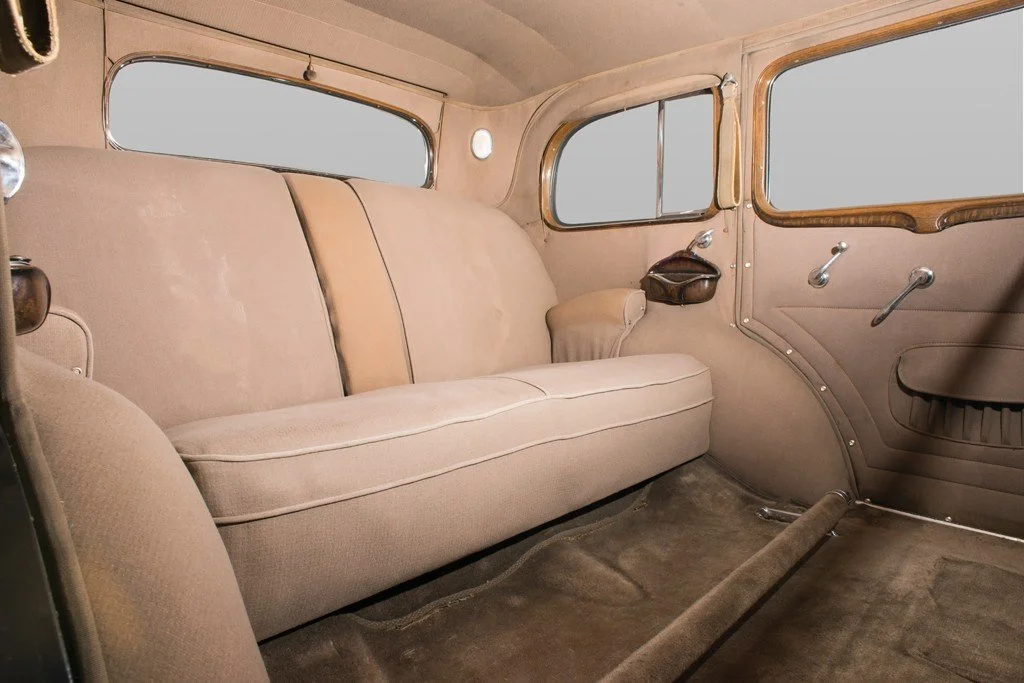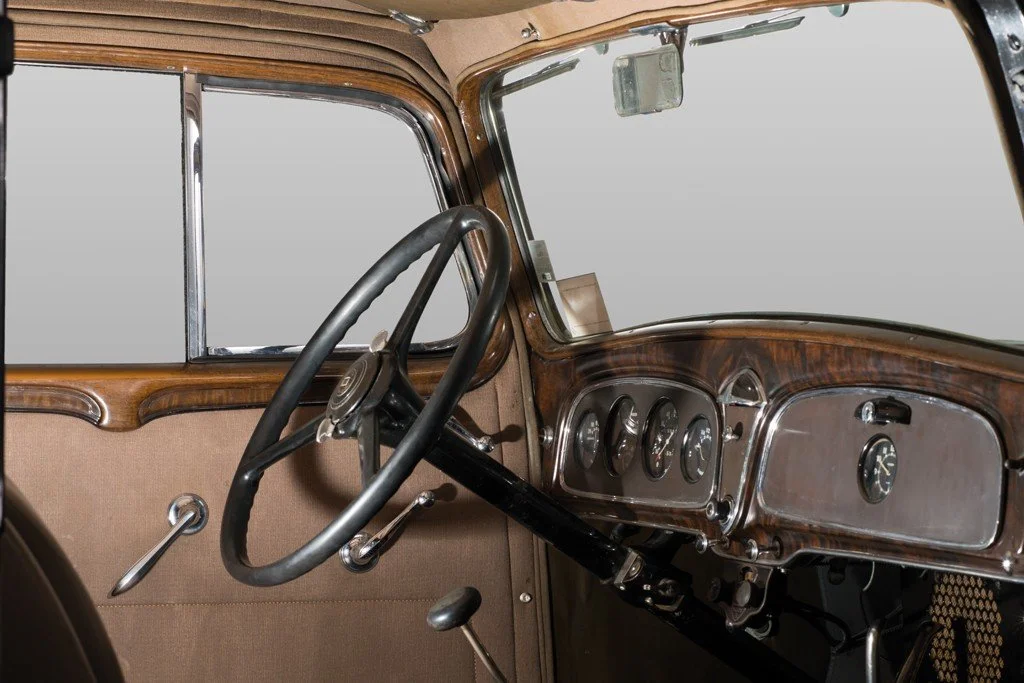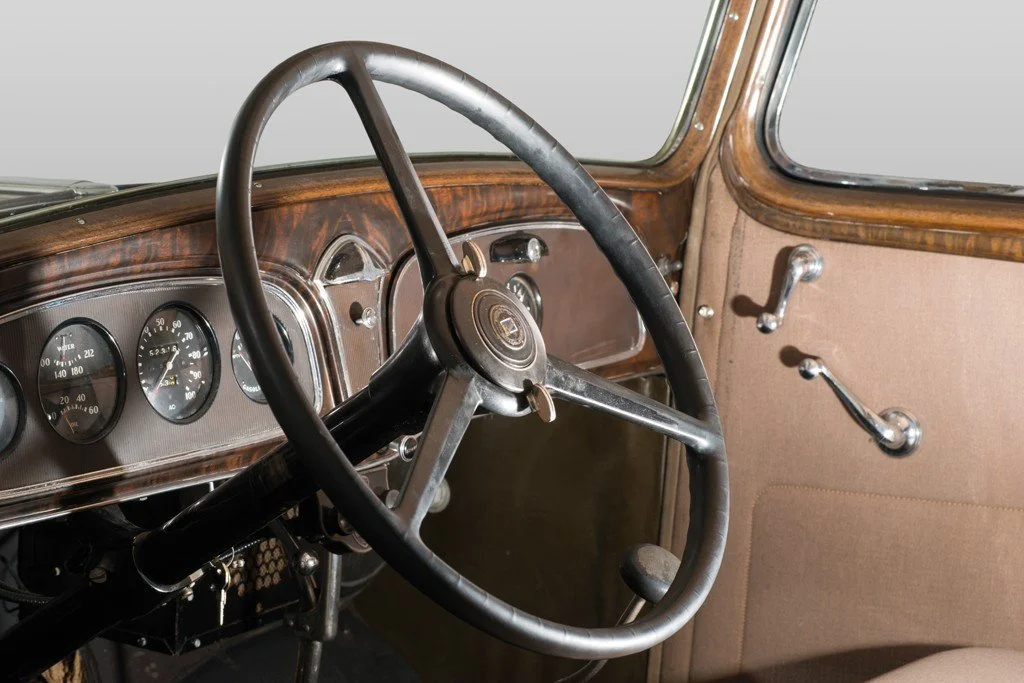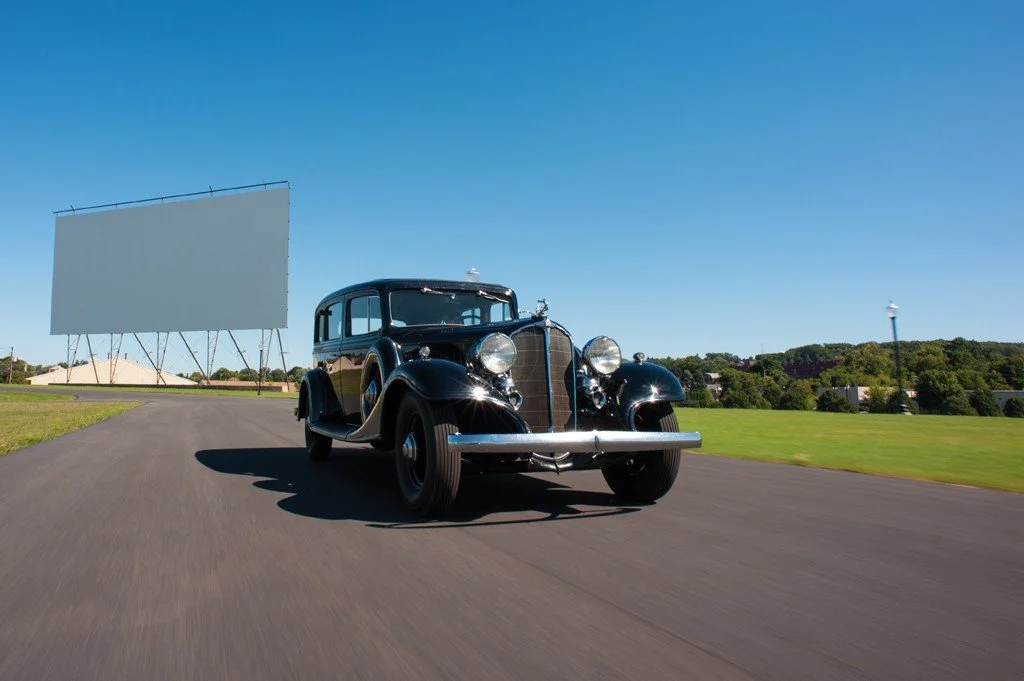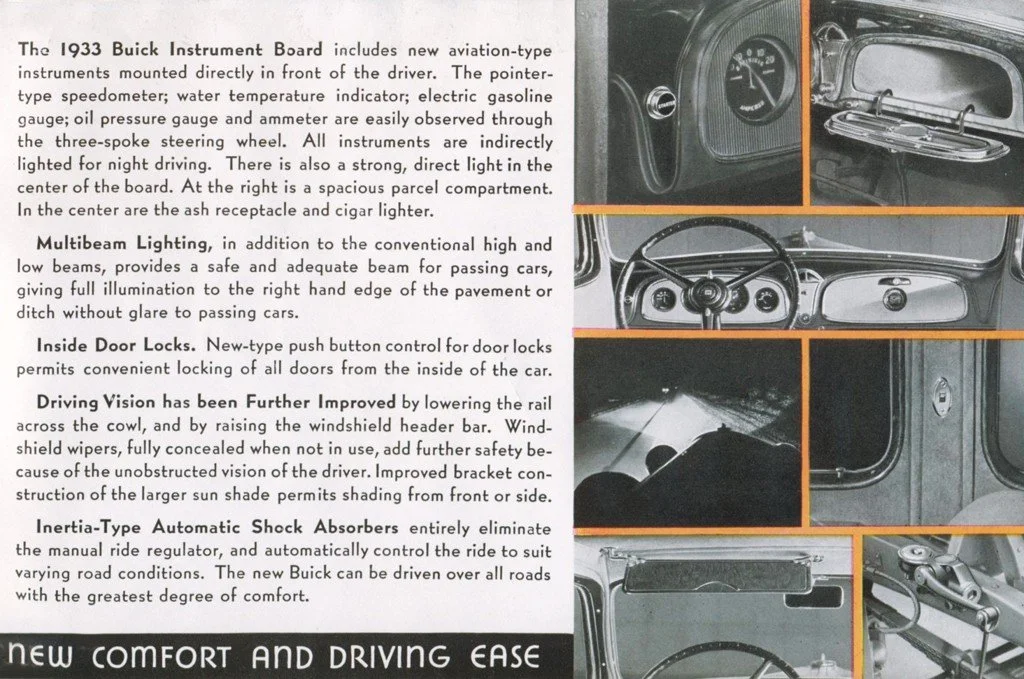-
Nothing is known of the history of this car. Another example of a survivor car in the collection, this completely original example was found and purchased in Arkansas in 2014. The car required a mechanical refresh including new belts, hoses, tires, battery and complete service, including fluid change. It also required the replacement of the glass as the original safety glass had delaminated to the point of making it impossible to see out of the car.
-
Company
General MotorsMake
BuickModel
33-90LBody Style
Limousine, 4-door, 7- pass.Body Manufacture
Fisher Body Co.Model year
1933Wheelbase
138 inchesLength
N/AEngine
OHV, 8-inline, 344.8 cidHorsepower
113 bhp @ 3200 rpmTransmission
Sliding gear, 3-speed manualOriginal Base Price
$2,055Brand Production
45,150 +1,774 export for model yearThis Car Production
299 -
Buick’s downward spiral of the late 1920’s and early 1930’s was due in large part to overly conservative styling, a lack of horsepower, poor fuel economy and a reluctance of management to change the course of the company. A new inline eight-cylinder engine, introduced in 1931 was the first step, improving horsepower, performance and economy. Styling also began to update quicker in 1931. But the changes came too slowly and efficiency of manufacturing was not central to planning so manufacturing costs remained high as the Great Depression took hold.
Longtime Buick President Edward T. Strong was briefly replaced by Irving J. Rueter in 1932. General Motors President Alfred P. Sloan had a soft spot for Buick but he was a tough businessman and if Buick couldn’t be turned around, he would close the division. In a last ditch effort to save the brand he appointed Harlow H. Curtice as President of Buick on October 23, 1933. Curtice had been the President of the AC spark plug division of GM and the two men were friends.
Curtice arrived way too late to have any impact on the 1933 cars and late enough that he could barely impact the 1934 cars. But, history would prove that Sloan’s hunch about Curtice was the right one.
Because of the Depression, buyers were scarce and those that could buy a car kept a lower profile. In theory, a buyer who could still afford a limousine may have opted for a Buick rather than a Cadillac to maintain appearances. But, there were not enough buyers to make much of a difference to either company. Of the five body styles offered in the series 90 for 1933, the lowest production was the 90L limousine at 299 cars.
The 138” wheelbase of the series 90 cars provided enough length for the 7-passenger limousine body. While the 104 horsepower engine was less powerful than a comparable Cadillac V-8, it was not a big difference in performance because of the heavy Cadillac bodies.
1933 proved to be the bottom of the car market but at the time, the future looked very bleak.



